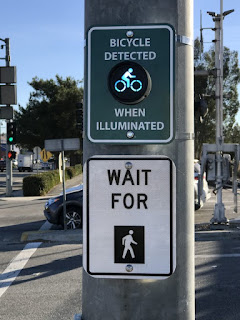I must confess that I have never been to Indiana. For me, hearing its name brings to mind a song that was extremely popular when I was about twelve years old: "Indiana Wants Me."
(Of course, it's fair to ask why a Canadian wrote and sung a song about running from the law in the Hoosier State. Then again, it's hard imagine the name of any Canadian province fitting into the meter of the lyrics, or the rhythm of the song, as well as "Indiana" does.)
Anyway, the fugitive in R. Dean Taylor's tune probably couldn't move as quickly as some students from one of the state's institutions of higher learning.
Marian University, located in Indianapolis, is a non-profit school affiliated with the Catholic Church (via the Sisters of Saint Francis, who founded it) that is known for one of its athletic programs in a state whose citizens are as passionate as any about collegiate sports. Although it competes in many of the sports one might expect, it's not known for its basketball team, as nearby Indiana University is, or football (the American version), which has been one of Notre Dame University's calling cards.
Rather, Marian is known far and wide for its cycling team, which has won 37 national titles: 19 on the track and the rest divided between road, mountain bike and cyclo-cross. That they've won so often on the velodrome is, perhaps, not surprising when one considers that the riders train on the Major Taylor Velodrome, a part of the Indy Cycloplex--which the University has owned since 2011.
One particular need of every cycling team has led to the establishment, at Marian, of what might be a unique scholarship--one for a team mechanic. The University has just announced that Charis Lott, a senior at Mount Vernon High School in nearby Fortville. According to coach Dean Peterson, the team would be "hard pressed" to find someone more qualified than Charis: She already has five years of mechanical experience with Freewheelin' Community Bikes and LoKe Bicycles. That, Peterson says, has prepared her to "serve the diverse needs" in the "variety of settings" in which the team trains and competes.
But being the team mechanic, for Ms. Lott, will mean more than just wrenching racers' bikes. The scholarship is part of a program, first announced two years ago, that aims to teach students that being a team mechanic also involves coordinating logistics, providing athlete care, service course management, sponsor relations, marketing and other things.
Her work with the team should tie in very nicely with her plans: She wants to major in psychology, with a concentration in sports. After all, as someone titled his book with unintended irony, it's not about the bike--or the body.
(Of course, it's fair to ask why a Canadian wrote and sung a song about running from the law in the Hoosier State. Then again, it's hard imagine the name of any Canadian province fitting into the meter of the lyrics, or the rhythm of the song, as well as "Indiana" does.)
Anyway, the fugitive in R. Dean Taylor's tune probably couldn't move as quickly as some students from one of the state's institutions of higher learning.
Marian University, located in Indianapolis, is a non-profit school affiliated with the Catholic Church (via the Sisters of Saint Francis, who founded it) that is known for one of its athletic programs in a state whose citizens are as passionate as any about collegiate sports. Although it competes in many of the sports one might expect, it's not known for its basketball team, as nearby Indiana University is, or football (the American version), which has been one of Notre Dame University's calling cards.
Rather, Marian is known far and wide for its cycling team, which has won 37 national titles: 19 on the track and the rest divided between road, mountain bike and cyclo-cross. That they've won so often on the velodrome is, perhaps, not surprising when one considers that the riders train on the Major Taylor Velodrome, a part of the Indy Cycloplex--which the University has owned since 2011.
 |
| Charis Lott (center) with head coach Dean Peterson (right) and Michael Kubancsek (left), Marian University's director of cycling operations. |
One particular need of every cycling team has led to the establishment, at Marian, of what might be a unique scholarship--one for a team mechanic. The University has just announced that Charis Lott, a senior at Mount Vernon High School in nearby Fortville. According to coach Dean Peterson, the team would be "hard pressed" to find someone more qualified than Charis: She already has five years of mechanical experience with Freewheelin' Community Bikes and LoKe Bicycles. That, Peterson says, has prepared her to "serve the diverse needs" in the "variety of settings" in which the team trains and competes.
But being the team mechanic, for Ms. Lott, will mean more than just wrenching racers' bikes. The scholarship is part of a program, first announced two years ago, that aims to teach students that being a team mechanic also involves coordinating logistics, providing athlete care, service course management, sponsor relations, marketing and other things.
Her work with the team should tie in very nicely with her plans: She wants to major in psychology, with a concentration in sports. After all, as someone titled his book with unintended irony, it's not about the bike--or the body.















